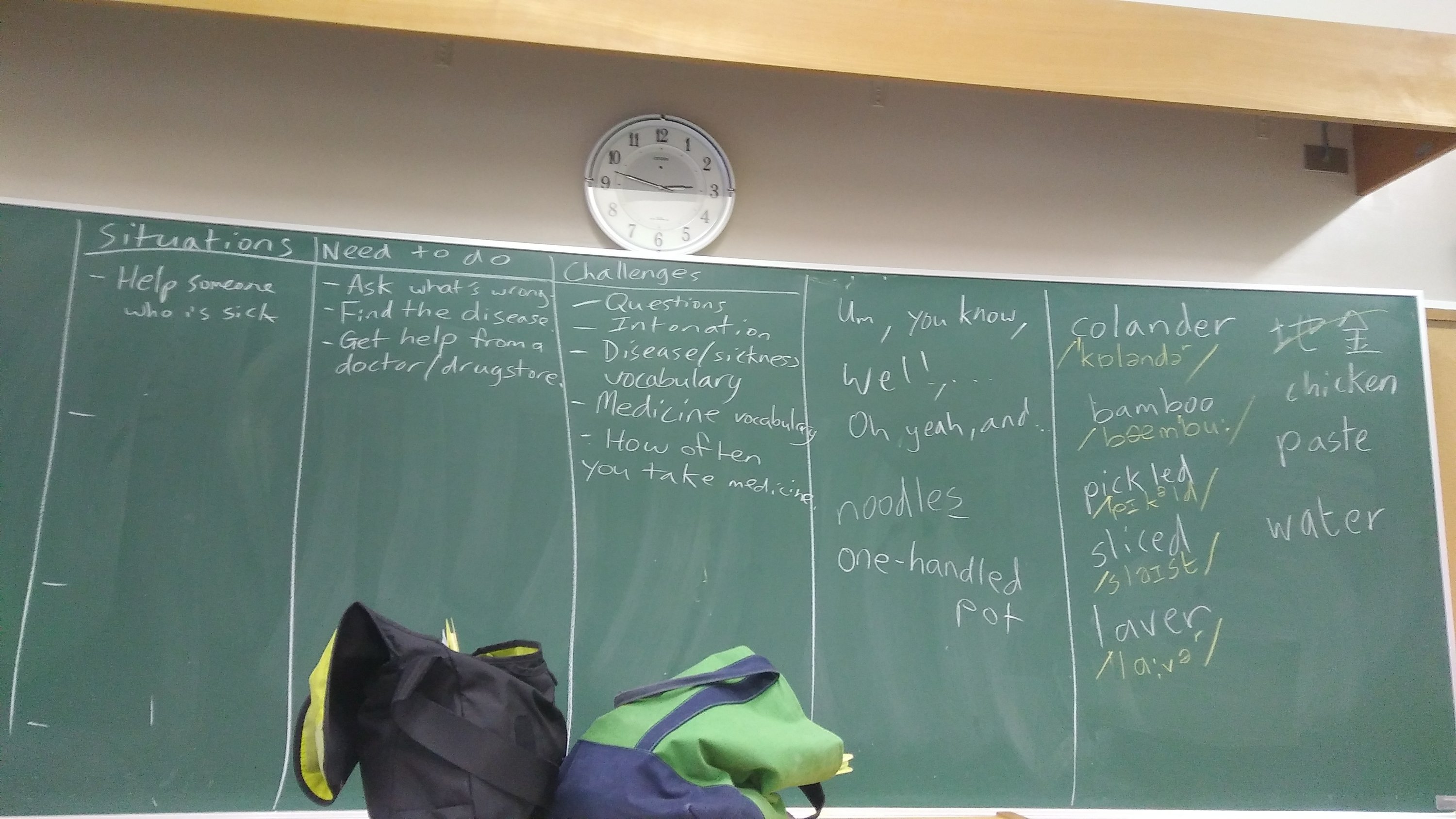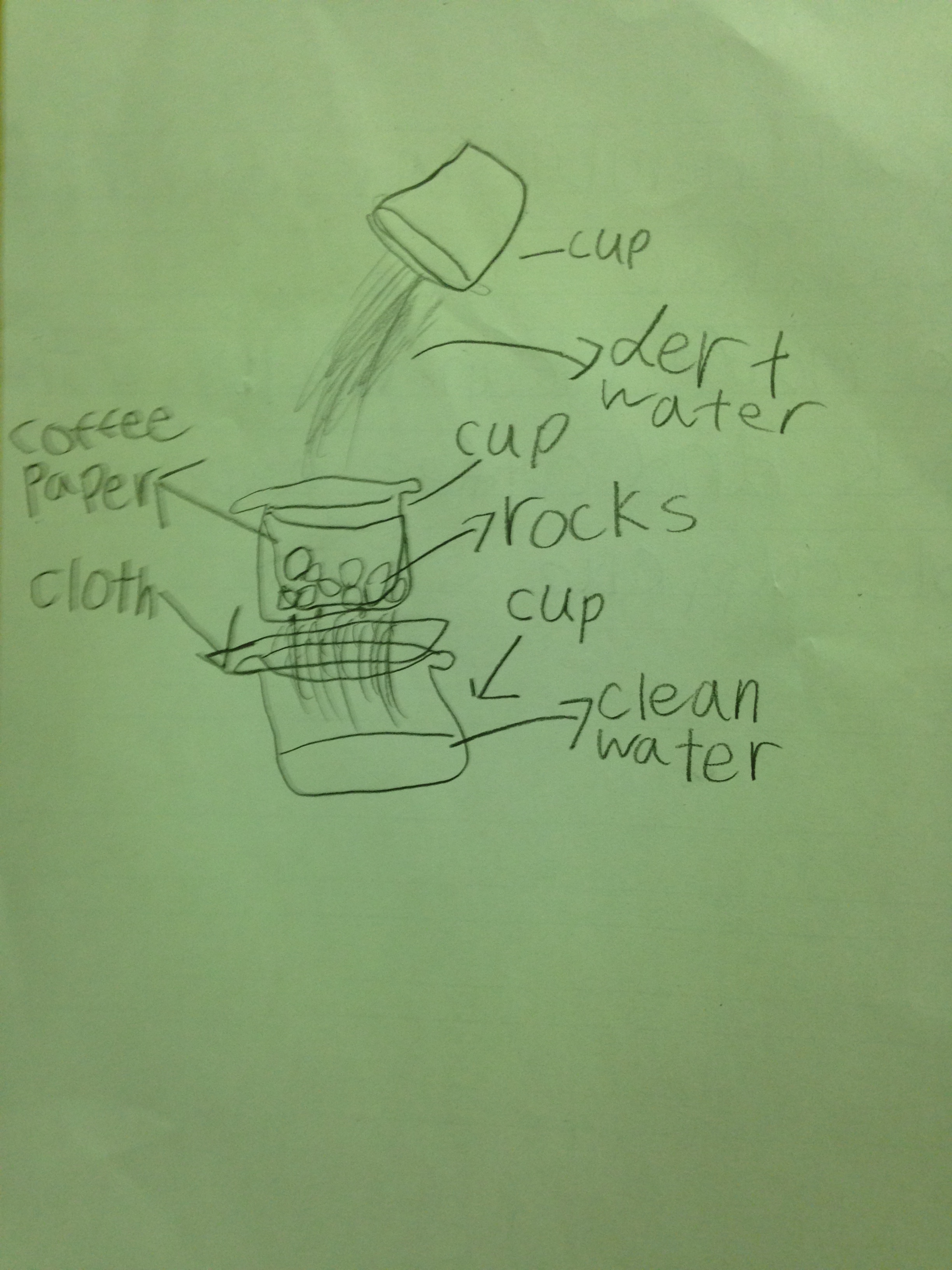You are in a classroom. There is a dais with a desk, behind which there is a blackboard. In front of you there are eight novices awaiting instruction.
I choose to engage the novices.
Go ahead.
Today, I have a plan. However, I am interested to know if you have a different plan. My plan can be for another day. Please imagine different situations that you and Rob or Vanessa (our regular Non-Player Characters) might be in. Use last week’s lesson as a planning guide. If you need help, please ask me.
Roll D10>3 and D4<4 for successful engagement and +1 courage.
D10=7,
D4 falls off desk… =1.
It went really well, actually. The students planned in two groups of 4. One group decided on explaining a road relay (and did very well indeed), and the other planned to teach how to make miso soup, which they underestimated the complexity of, but I see this as a good learning experience. I also think that by giving my students a metaphorical look behind the curtain that they can understand the success criteria for the tasks I create a bit better. I would still like a bit more linguistic complexity in their output, but today I am going to take this as a success.
XP +D6
D6=4.
Read Here be (Dungeons and) Dragons previous ‘chapters’: 1, 2, 3, 4, 5, 6, 7, 8, 9.
Tag: lessonplan
TBLT for Kids. Easy science lesson plan.
This is basically to go with an idea that I am trying to run with. Based on the BerlinLanguage Worker GAS group, I would like to see something similar happen in the Greater Tokyo area. There is the ETJ Workshop series, but that is sponsored by Oxford University Press and what I am really interested in is people getting together to share their ideas and producing lesson plans and/or materials together, with the materials being Creative Commons licensed so that anyone who wants to use them can do so and change them or improve them as appropriate for their setting. If you are interested, get in touch via the comments.
Level:
Pre-intermediate upward.
Lesson Aims:
- Students write a report using sequencing language.
- Students produce a labelled diagram.
Time:
About an hour.
Materials:
Dirt, pebbles/gravel, water, disposable plastic cups (three per group), cloth, coffee filters, a pair of compasses/corkscrew/pocketknife, paper lined one side and unlined on the other.
1. Each group needs three cups. Put holes in the bottom of one.
2. Elicit names for all of the materials.
3. Pour water into one cup for each group and add dirt.
4. Tell students to clean the water. Remind them to use English as much as possible when talking to each other because they may need to write it down later.
5. Students try to clean water. If they don’t manage it after about half an hour drop massive hints or else model it.
6. Students draw a diagram of their most successful filtration setup and label it. You might need to model it, you might not.

7. After diagrams are drawn, students write up what they did. Again, modelling the writing is advantageous and possibly essential depending on the level of the kids.
EXTENSION: Students evaluate their group. Who did what? Who had the most successful ideas.
MAKING IT MORE DIFFICULT: Put cooking oil or sugar in the water.